2018-08-02 - Nº 170

Editorial
Esta é a Newsletter Nº 170 que se apresenta com o mesmo formato que as anteriores. Se gostar da Newsletter partilhe-a!
Todas as Newsletters encontram-se indexadas no link.
Esta Newsletter tem os seguintes tópicos:
Faz hoje anos que nascia, em 1788, Leopold Gmelin. Este químico alemão descobriu o ferro-cianeto de potássio (1822), inventou o teste de Gmelin para pigmentos biliares e pesquisou a química da digestão. Ele publicou o notável Handbook of Chemistry para pesquisar exaustivamente o assunto. Esta foi a primeira actualização completa desde o tempo de Lavoisier. A química orgânica foi um dos três volumes da primeira edição (1817). Assim, Gmelin reforçou a distinção entre compostos inorgânicos, assim como Berzelius, que cunhou o nome orgânico, apenas uma década antes, para substâncias encontradas em tecidos vivos ou outrora vivos. Na quarta edição (1843), o trabalho de Gmelin expandiu-se para nove volumes, dos quais seis eram sobre química orgânica. Gmelin atribuiu os nomes de éster, cetona e ácido racémico.
Faz também anos hoje que nascia, em 1820, John Tyndall. Este físico irlandês demonstrou o porquê do céu ser azul. Ele tornou-se conhecido para o mundo científico em 1848 como autor de um trabalho substancial sobre cristais. Ele estudou as propriedades acústicas da atmosfera e a cor azul do céu, que ele sugeriu ser devido à dispersão da luz por pequenas partículas de água. A sua reputação científica inicial foi baseada num estudo de dia-magnetismo. Ele realizou pesquisas sobre o calor radiante, estudou a geração espontânea e a teoria dos germes da doença, o movimento dos glaciares, o som, a difusão da luz na atmosfera e uma série de tópicos relacionados. Ele mostrou que o ozono era um aglomerado de oxigénio em vez de um composto de hidrogénio, e inventou o respirador firemans e fez outras invenções menos conhecidas, incluindo melhores alertas de nevoeiro. Uma de suas invenções mais importantes, o tubo de luz, levou ao desenvolvimento de fibra óptica. O moderno instrumento de luz é conhecido como gastroscópio, que permite observações internas do estômago do paciente sem cirurgia.
Faz igualmente hoje anos que nascia, em 1835, Elisha Gray. Este inventor norte-americano submeteu as suas ideias para um telefone no escritório de patentes (14 de Fevereiro de 1876) poucas horas depois de Alexander Graham Bell. Numa famosa batalha legal, Bell recebeu prioridade. Gray trabalhou mais tarde para a Western Electric, onde projectou a impressora telegráfica, a caixa de resposta da A.D.T., e o anunciador de agulha, entre outras invenções. Ele também foi o criador acidental do primeiro instrumento musical electrónico, um oscilador básico de uma única nota usando um circuito electromagnético auto-vibrante. Para ouvir essa nota, ele fez um dispositivo de alto-falante simples com um diafragma vibrando num campo magnético. O seu primeiro "telégrafo musical" ou "telégrafo harmónico" tinha circuitos de uma única nota suficientes para tocar duas oitavas e, mais tarde, ele acrescentava um controle de roda de tom simples.
Por fim, faz anos hoje que nascia, em 1943, Frank A. Perret. Este engenheiro e inventor norte-americano que mais tarde se tornou um vulcanólogo de campo pioneiro. Usando a sua experiência anterior nos laboratórios de Thomas Edison, aos 20 anos, Perret co-fundou a Elektron Mfg Co. em Brooklyn, NY, desenvolvendo os motores, dínamos e controles eléctricos que a empresa fabricava (e mais tarde, elevadores). O primeiro elevador eléctrico americano (1887) foi provavelmente alimentado por um motor Elektron. Ele começou uma segunda carreira em 1904 como um vulcanólogo, usando o seu conhecimento eléctrico para medir sua actividade sísmica. Ele tornou-se conhecido por seus estudos no Vesúvio (1906), Etna (1910), Stromboli e Kilauea (1911). A partir de 1929, ele viveu no sopé do Mont Pelée, Martinica, onde fundou um memorial museu vulcânico.
Nesta semana que passou foi publicado um estudo que apresenta dados, obtidos a partir da leitura de varrimentos de radar, da existência de um reservatório de agua em Marte. Este tem cerca de 19 km de comprimento e encontra-se perto do pólo sul deste planeta. Este reservatório de agua salgada não é provavelmente o único. “Existem outras áreas que parecem semelhantes. Não há razão para dizer que este é o único”, diz Elena Pettinelli, da Universidade Roma Tre, na Itália, co-autora do jornal que relatou a descoberta na revista Science.
Também esta semana ficámos a saber que a Estação Espacial Internacional é oficialmente o lar da experiência mais fria no espaço. O Laboratório Cold Atom da NASA (CAL) foi instalado no laboratório científico da estação nos EUA no final de maio e agora produz nuvens de átomos super-frios conhecidos como condensados de Bose-Einstein. Essas "BECs" atingem temperaturas muito pouco acima do zero absoluto, o ponto em que os átomos deveriam teoricamente parar de se mover inteiramente. Esta é a primeira vez que os BECs já foram produzidos em órbita. O CAL é uma instalação multi-utilizador dedicada ao estudo de leis fundamentais da natureza usando gases quânticos ultra-frios em micro-gravidade. Átomos frios são partículas quânticas de longa duração, precisamente controladas, que fornecem uma plataforma ideal para o estudo de fenómenos quânticos e potenciais aplicações de tecnologias quânticas.
Na Newsletter desta semana apresentamos diversos projetos de maker assim como um modelo 3D que poderá ser útil. É apresentada a revista newlectronics de 24 de Julho.
 João Alves ([email protected])
João Alves ([email protected])
O conteúdo da Newsletter encontra-se sob a licença  Creative Commons Attribution-NonCommercial-ShareAlike 4.0 International License.
Creative Commons Attribution-NonCommercial-ShareAlike 4.0 International License.
Novidades da Semana

Underground Lake Found on Mars? Get the Facts.
"The 12-mile-wide reservoir could solve a Martian mystery—and offer a new target in the hunt for extraterrestrial life. Liquid water is refreshingly abundant on moons in the outer solar system, but it has proven surprisingly tough to find in reliable quantities on Mars—until now. Radar scans of the red planet suggest that a stable reservoir of salty, liquid water measuring some 12 miles across lies nearly a mile beneath the planet’s south pole. What’s more, the underground lake is not likely to be alone. “There are other areas that seem to be similar. There’s no reason to say this is the only one,” says Elena Pettinelli of Italy’s Roma Tre University, a coauthor of the paper reporting the discovery today in the journal Science." [...]
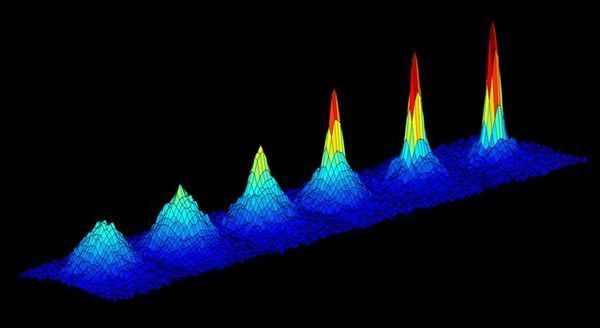
Space Station Experiment Reaches Ultracold Milestone
"The International Space Station is officially home to the coolest experiment in space. NASA's Cold Atom Laboratory (CAL) was installed in the station's U.S. science lab in late May and is now producing clouds of ultracold atoms known as Bose-Einstein condensates. These "BECs" reach temperatures just above absolute zero, the point at which atoms should theoretically stop moving entirely. This is the first time BECs have ever been produced in orbit. CAL is a multiuser facility dedicated to the study of fundamental laws of nature using ultracold quantum gases in microgravity. Cold atoms are long-lived, precisely controlled quantum particles that provide an ideal platform for the study of quantum phenomena and potential applications of quantum technologies." [...]
Outras Notícias
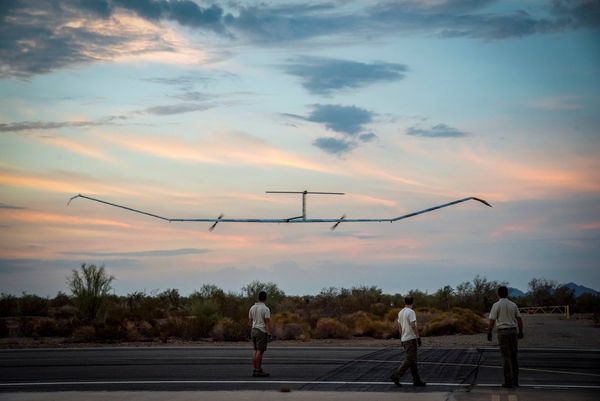
Zephyr S set to break aircraft world endurance record
"Zephyr S, Airbus’ High-Altitude-Pseudo-Satellite, has surpassed the current flight endurance record of an aircraft without refueling of 14 days, 22 minutes and 8 seconds and continues to pioneer the stratosphere. The Zephyr aircraft departed for its maiden flight from Arizona, USA on 11th July 2018. This first flight of the Zephyr S aims to prove and demonstrate the aircraft capabilities, with the final endurance record to be confirmed on landing. About the Airbus Zephyr Programme: solar-powered aircraft, providing a wide scope of applications, ranging for example from maritime surveillance and services, border patrol missions, communications, forest fire detection and monitoring, or navigation. Operating in the stratosphere at an average altitude of 70,000 feet / 21 kilometers, the ultra-lightweight Zephyr has a wingspan of 25 meters and a weigh of less than 75kg, and flies above weather (clouds, jet streams) and above regular air traffic, covering local or regional footprints. Ideally suited for "local persistence" (ISR/Intelligence, Surveillance & Reconnaissance), the Zephyr has the ability to stay focused on a specific area of interest (which can be hundreds of miles wide) while providing it with satellite-like communications and Earth observation services (with greater imagery granularity) over long periods of time without interruption." [...]
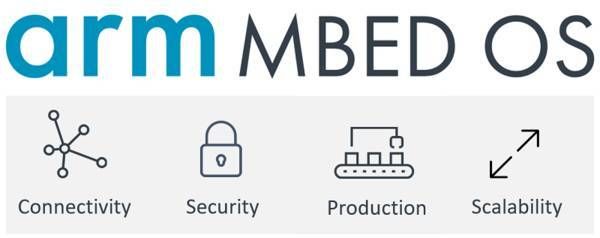
Mbed OS 5.9.4 released
"We are pleased to announce the Mbed OS 5.9.4 release is now available. This is the latest patch release based on the feature set that Mbed OS 5.9 introduces. This release showcases several new targets added to Mbed OS: Silicon Labs has enabled their EFM32GG11 chips, with the supporting STK3701 dev board Toshiba has added a new target, the TMPH3H6 Nuvoton has enabled the NUMAKER_PFM_M2351, the first Cortex-M23 CPU in Mbed OS, and the first ARMc6 target enabled MPS2 Fast Model targets have now been added and enabled. An IAR linker fix for the NRF52832 had been made, shrinking the ram size of the part to match it's datasheet. Several Silicon Labs targets have now enabled hardware CRC acceleration. Unity macros have now been added to enable the ability to skip tests if requested." [...]
Ciência e Tecnologia

Illuminating electronics: Researchers construct all-optical pocket calculator
"New findings from Aalto University have the potential to change how electronics process logic functions, the elementary building blocks of computing. Our daily lives rely on electronic processors, which perform the basic arithmetic, logical, and control operations that make devices from mobile phones to smart TVs possible. Current technologies are, however, approaching their limits and researchers around the world are looking to enable the next generation of computing. In their paper now published in Science Advances, an interdisciplinary team of researchers at Aalto University show how a new type of nanowire-based nanostructure enables light to perform logic functions, allowing simple addition and subtraction operations. The study, the first to demonstrate nanoscale all-optical logic circuits, provides a vital step in the journey towards true optical computing. ‘We’re able to perform binary number calculations and show, for instance, how this nanostructure can carry out these functions just like a simple pocket calculator—except that instead of using electricity, the nanostructure uses only light in its operation,’ says Dr. Henri Jussila, who completed a post-doc at the university on the topic." [...]
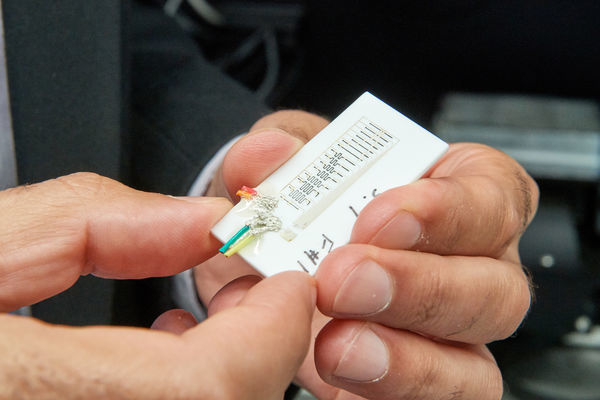
'Smart' Machine Components Alert Users to Damage and Wear
"Scientists at the United Technologies Research Center and UConn are using advanced additive manufacturing technology to create ‘smart’ machine components that alert users when they are damaged or worn. The researchers also applied a variation of the technology to create polymer-bonded magnets with intricate geometries and arbitrary shapes, opening up new possibilities for manufacturing and product design. The key to both innovations is the use of an advanced form of 3D printing called direct write technology. Unlike conventional additive manufacturing, which uses lasers to fuse layers of fine metal powder into a solid object, direct write technology uses semisolid metal ‘ink’ that is extruded from a nozzle. The viscosity of the metal ink looks like toothpaste being squeezed from a tube. This process allowed the UConn-UTRC scientists to create fine lines of conductive silver filament that can be embedded into 3D printed machine components while they are being made." [...]

Better way found to determine the integrity of metals
"Researchers at the University of Waterloo have found a better way to identify atomic structures, an essential step in improving materials selection in the aviation, construction and automotive industries. The findings of the study could result in greater confidence when determining the integrity of metals. Devinder Kumar, a PhD candidate in systems design engineering at Waterloo, collaborated with the Fritz Haber Institute (FHI) in Berlin, to develop a powerful AI model that can accurately detect different atomic structures in metallic materials. The system can find imperfections in the metal that were previously undetectable. “Anywhere you have metals you want to know the consistency, and that can’t be done in current practical scenarios because current methods fail to identify the symmetry in imperfect conditions,” said Kumar, who is a member of the Vision and Image Processing Research Group under the supervision of Alexander Wong, a professor at Waterloo and Canada Research Chair in the area of artificial intelligence. “So, this new method of evaluating metallic material will lead to better material design overall and has the potential to affect all the industries where you need material designing properties.” FHI came up with a new scenario that can artificially create data which relates to the real world." [...]
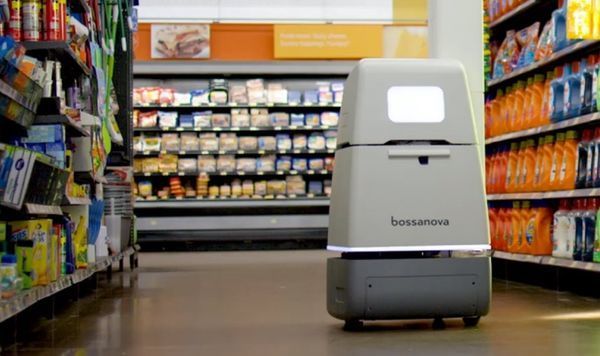
CMU, Bossa Nova to apply AI to retail analytics
"Carnegie Mellon University has announced a research partnership with Bossa Nova, the leading provider of real-time, on-shelf product data for the global retail industry, to develop and integrate artificial intelligence into service robots in retail stores nationwide. Carnegie Mellon University announces a research partnership with Bossa Nova, the leading provider of real-time, on-shelf product data for the global retail industry, to develop and integrate artificial intelligence into service robots in retail stores nationwide. Bossa Nova’s robots are currently used in 50 Walmart stores across the United States, making it the largest deployment of this kind of technology in any retailer. “This exciting collaboration between Bossa Nova and Carnegie Mellon reflects the growing synergy between universities engaged in cutting-edge research and companies that specialize in emerging technologies,” said Farnam Jahanian, president of Carnegie Mellon. “By bringing together CMU’s expertise in advanced artificial intelligence with Bossa Nova’s revolutionary software and industry partnerships, we can improve the retail experience for millions of consumers.” Bossa Nova recently acquired the AI company, HawXeye, a CMU spinoff founded by Professor Marios Savvides and Andy Lin. Savvides is the director of the CyLab Biometrics Center and a professor in the department of Electrical and Computer Engineering." [...]
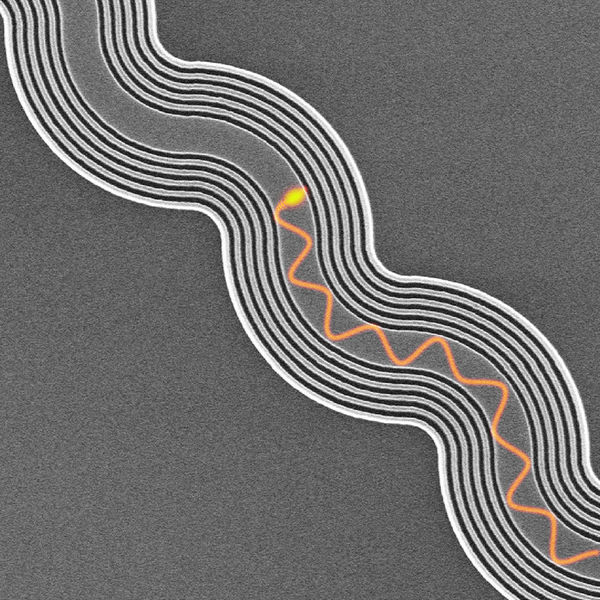
Trapping light that doesn't bounce off track for faster electronics
"Replacing traditional computer chip components with light-based counterparts will eventually make electronic devices faster due to the wide bandwidth of light. A new protective metamaterial "cladding" prevents light from leaking out of the very curvy pathways it would travel in a computer chip. Because processing information with light can be more efficient than with electrons used in current devices, there is good reason to confine light onto a chip. But light and the bits of information it carries tend to leak and scatter out of the tiny components that must fit on a chip. A Purdue University-led effort has built a novel cladding along the highways for light travel, called waveguides, to prevent information leaks – particularly around sharp bends where light bounces off track and scatters. Information then gets lost or jumbled rather than communicated throughout a device." [...]

Army's new 3-D printed shape-shifting soft robots crawl, jump, grab
"New 3-D printed robotic structures can squeeze in tight spaces like a crack in the wall of a cave, jump over trip wire or crawl under a vehicle - all complex Army-relevant functions impossible for humans to perform safely. Investigators at the Army's Institute for Soldier Nanotechnologies (ISN), located at MIT, have developed a 3-D printing platform that can enable both the modeling and design of complex magnetically actuated devices. The new approach utilizes a 3-D printing platform fitted with an electromagnet nozzle and a new type of 3-D printable ink infused with magnetic particles. Their findings could lead to new biomedical applications, magnetic ink optimized to strengthen soft robotic functionality, and new on-demand flexible material systems for integration into Soldier systems. Soft robotic capabilities and manufacturing at the point of need are among the Army's top research priorities. This research is managed through the U.S. Army Research Laboratory's Army Research Office by Dr Aura Gimm." [...]

Helping computers perceive human emotions
"Personalized machine-learning models capture subtle variations in facial expressions to better gauge how we feel. MIT Media Lab researchers have developed a machine-learning model that takes computers a step closer to interpreting our emotions as naturally as humans do. In the growing field of “affective computing,” robots and computers are being developed to analyze facial expressions, interpret our emotions, and respond accordingly. Applications include, for instance, monitoring an individual’s health and well-being, gauging student interest in classrooms, helping diagnose signs of certain diseases, and developing helpful robot companions. A challenge, however, is people express emotions quite differently, depending on many factors. General differences can be seen among cultures, genders, and age groups." [...]

Memory-processing unit could bring memristors to the masses
"A new way of arranging advanced computer components called memristors on a chip could enable them to be used for general computing, which could cut energy consumption by a factor of 100. This would improve performance in low power environments such as smartphones or make for more efficient supercomputers, says a University of Michigan researcher. “Historically, the semiconductor industry has improved performance by making devices faster. But although the processors and memories are very fast, they can’t be efficient because they have to wait for data to come in and out,” said Wei Lu, U-M professor of electrical and computer engineering and co-founder of memristor startup Crossbar Inc. Memristors might be the answer. Named as a portmanteau of memory and resistor, they can be programmed to have different resistance states—meaning they store information as resistance levels. These circuit elements enable memory and processing in the same device, cutting out the data transfer bottleneck experienced by conventional computers in which the memory is separate from the processor." [...]
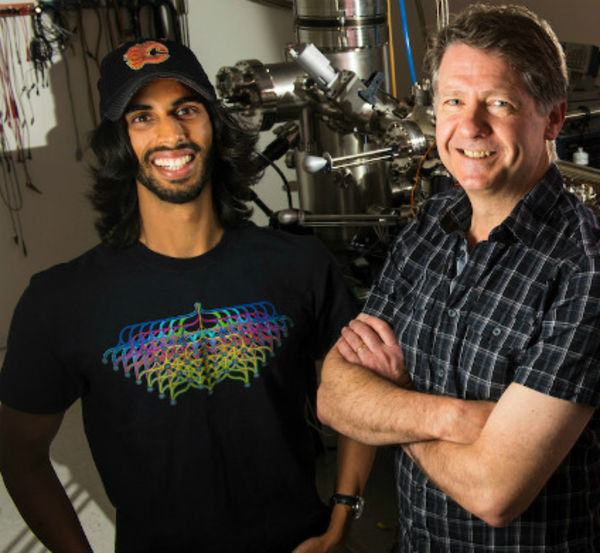
Scientists perfect technique to boost capacity of computer storage a thousandfold
"New technique leads to world’s densest solid-state memory that can store 45 million songs on the surface of a quarter. The most dense solid-state memory ever created could soon exceed the capabilities of current computer storage devices by 1,000 times, thanks to a new technique scientists at the University of Alberta have perfected. “Essentially, you can take all 45 million songs on iTunes and store them on the surface of one quarter,” said Roshan Achal, PhD student in Department of Physics and lead author on the new research. “Five years ago, this wasn’t even something we thought possible.” The scientists used the same technology they developed to manufacture atomic-scale circuits, which allows for quickly removing or replacing single hydrogen atoms. The technology enables the memory to be rewritable, meaning it could lead to far more efficient types of solid-state drives for computers. Ready for real-world use Previous discoveries of atomic-scale computer storage were stable only at extremely low temperatures, but the new memory works at real-world temperatures and can withstand normal use." [...]
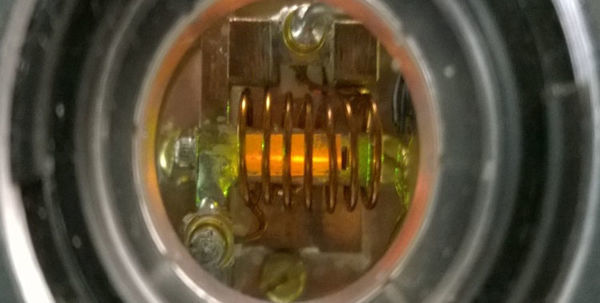
Ytterbium: the quantum memory of tomorrow
"Researchers from UNIGE, working closely with CNRS (France), have discovered a new material that can be used to store and repeat the quantum signal rapidly – could this be the beginning of a global quantum network? Quantum communication and cryptography are the future of high-security communication. But many challenges lie ahead before a worldwide quantum network can be set up, including propagating the quantum signal over long distances. One of the major challenges is to create memories with the capacity to store quantum information carried by light. Researchers at the University of Geneva (UNIGE), Switzerland, in partnership with CNRS, France, have discovered a new material in which an element, ytterbium, can store and protect the fragile quantum information even while operating at high frequencies. This makes ytterbium an ideal candidate for future quantum networks, where the aim is to propagate the signal over long distances by acting as repeaters." [...]

Artificial intelligence can predict your personality... simply by tracking your eyes
"It’s often been said that the eyes are the window to the soul, revealing what we think and how we feel. Now, new research reveals that your eyes may also be an indicator of your personality type, simply by the way they move. Developed by the University of South Australia in partnership with the University of Stuttgart, Flinders University and the Max Planck Institute for Informatics in Germany, the research uses state-of-the-art machine-learning algorithms to demonstrate a link between personality and eye movements. Findings show that people’s eye movements reveal whether they are sociable, conscientious or curious, with the algorithm software reliably recognising four of the Big Five personality traits: neuroticism, extroversion, agreeableness, and conscientiousness. Researchers tracked the eye movements of 42 participants as they undertook everyday tasks around a university campus, and subsequently assessed their personality traits using well-established questionnaires. UniSA’s Dr Tobias Loetscher says the study provides new links between previously under-investigated eye movements and personality traits and delivers important insights for emerging fields of social signal processing and social robotics." [...]
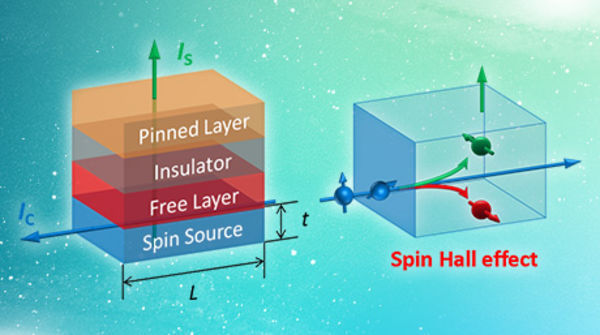
A colossal breakthrough for topological spintronics
"BiSb expands the potential of topological insulators for ultra-low-power electronic devices Scientists have developed the world's best-performing pure spin current source1 made of bismuth–antimony (BiSb) alloys, which they report as the best candidate for the first industrial application of topological insulators2. The achievement represents a big step forward in the development of spin-orbit torque magnetoresistive random-access memory (SOT-MRAM)3 devices with the potential to replace existing memory technologies. A research team led by Pham Nam Hai at the Department of Electrical and Electronic Engineering, Tokyo Institute of Technology (Tokyo Tech), has developed thin films of BiSb for a topological insulator that simultaneously achieves a colossal spin Hall effect4 and high electrical conductivity. Their study, published in Nature Materials, could accelerate the development of high-density, ultra-low power, and ultra-fast non-volatile memories for Internet of Things (IoT) and other applications now becoming increasingly in demand for industrial and home use. The BiSb thin films achieve a colossal spin Hall angle of approximately 52, conductivity of 2.5 × 105 and spin Hall conductivity of 1.3×107 at room temperature. (See Table 1 for a performance summary, including all units.)" [...]
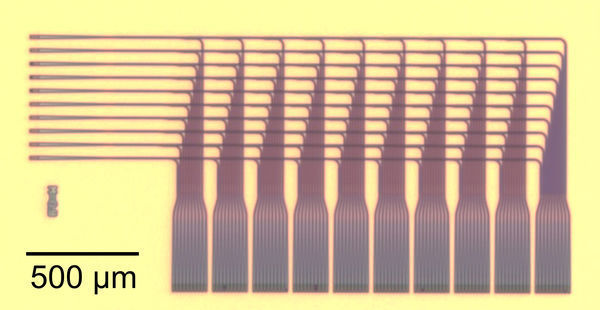
NIST Chip Lights Up Optical Neural Network Demo
"Researchers at the National Institute of Standards and Technology (NIST) have made a silicon chip that distributes optical signals precisely across a miniature brain-like grid, showcasing a potential new design for neural networks. The human brain has billions of neurons (nerve cells), each with thousands of connections to other neurons. Many computing research projects aim to emulate the brain by creating circuits of artificial neural networks. But conventional electronics, including the electrical wiring of semiconductor circuits, often impedes the extremely complex routing required for useful neural networks. The NIST team proposes to use light instead of electricity as a signaling medium. Neural networks already have demonstrated remarkable power in solving complex problems, including rapid pattern recognition and data analysis." [...]

Quantum Computing: Learning to Speak a Whole New Technology
"Before using quantum computers for scientific discovery, scientists need to first create the foundations for their computer languages. Imagine trying to use a computer that looks and acts like no computer you've ever seen. There is no keyboard. There is no screen. Code designed for a normal computer is useless. The components don't even follow the laws of classical physics." [...]

Computing power solves molecular mystery
"By using a novel combination of two simulation techniques, researchers at NTNU have found a new way to investigate the behaviour of molecules. It’s good news for the chemical industry. Chemical reactions take place around us all the time – in the air we breathe, the water we drink, and in the factories that make products we use in everyday life. And those reactions happen way faster than you can imagine. Given optimal conditions, molecules can react with each other in a quadrillionth of a second. Industry is constantly striving to achieve faster and better chemical processes." [...]

Two-faced edge makes nanotubes obey
"Rice theorists find mechanism behind nearly pure nanotubes from the unusualcatalyst Growing a batch of carbon nanotubes that are all the same may not be as simple as researchers had hoped, according to Rice University scientists. Rice materials theorist Boris Yakobson and his team bucked a theory that when growing nanotubes in a furnace, a catalyst with a specific atomic arrangement and symmetry would reliably make carbon nanotubes of like chirality, the angle of its carbon-atom lattice. Instead, they found the catalyst in question starts nanotubes with a variety of chiral angles but redirects almost all of them toward a fast-growing variant known as (12,6). The cause appears to be a Janus-like interface that is composed of armchair and zigzag segments – and ultimately changes how nanotubes grow. Because chirality determines a nanotube’s electrical properties, the ability to grow chiral-specific batches is a nanotechnology holy grail. It could lead to wires that, unlike copper or aluminum, transmit energy without loss." [...]
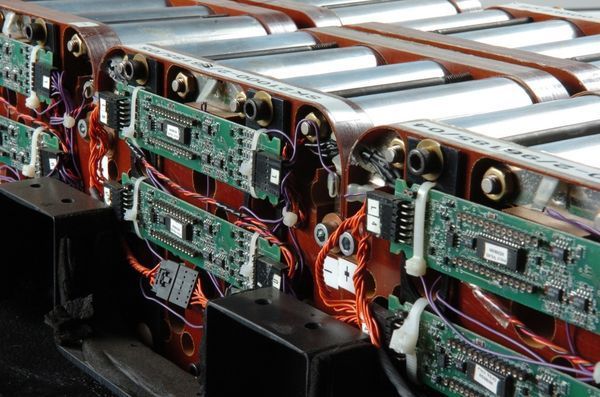
Advance Could Yield Safer, Longer-Range Electric Car Batteries
"A team of researchers from the University of Maryland, the Army Research Laboratory and Argonne National Laboratory (U.S. Department of Energy) has published findings on a new advanced battery technology that among its many possible applications has the potential to improve electric vehicle batteries in two key areas: driving range and battery safety. The UMD-led team has created a reliable battery with significantly higher energy storage capacity, more efficiency and greater safety than current batteries. Their peer-reviewed paper on the research was published July 16 in the journal Nature Nanotechnology. The driving range of an electric vehicle is directly proportional to the capacity, or energy density, of its batteries. Energy density is a battery’s energy output by unit weight. A battery technology that can safely deliver high energy density is widely seen as the Holy Grail for electric vehicle batteries." [...]
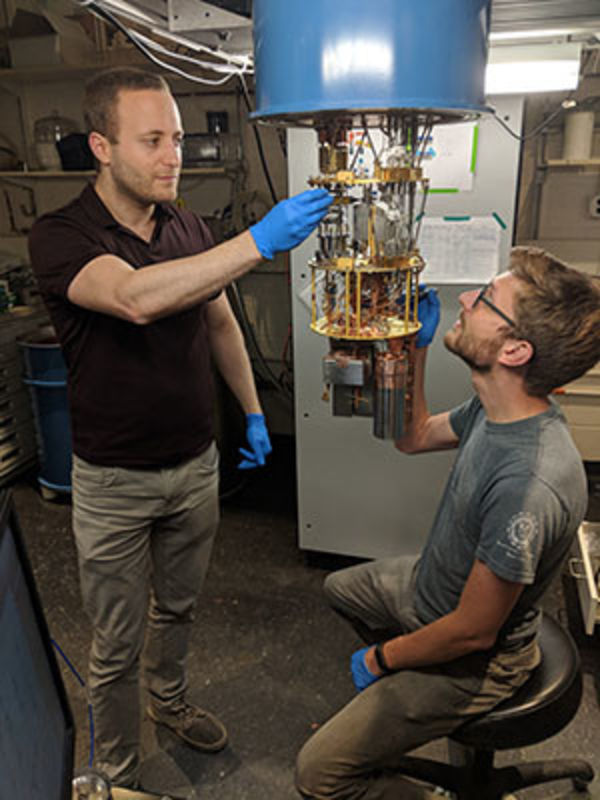
A fault-tolerant system for stopping 'leaks' in quantum computers
"Yale researchers have designed a new system to keep tomorrow’s quantum computers from “leaking.” Large-scale quantum computers are still years away, but it is well known that they will need error correction. All of the components in a quantum computer are connected in a fragile, entangled state that allows a quantum computer to solve problems that would be impossible on a classical computer. Because of this entanglement, an error in just one bit of quantum information, called a qubit — or even the act of measuring a qubit — can collapse the entire enterprise. Unfortunately, researchers say, the process of correcting errors is itself faulty and can further corrupt the information contained in qubits. “The only way a quantum computer can work is if its ‘logical’ qubits are constantly monitored by ‘ancillary’ qubits, which ensure logical errors are detected and corrected before they can affect the computation,” said Yale postdoctoral associate Serge Rosenblum, co-lead author of a new study published in the journal Science. Ancillary qubits have already been shown to correct logical errors, but their use so far has been limited because errors in the ancillary qubits can “leak” to the logical qubits, thereby introducing more errors than they’re able to fix." [...]
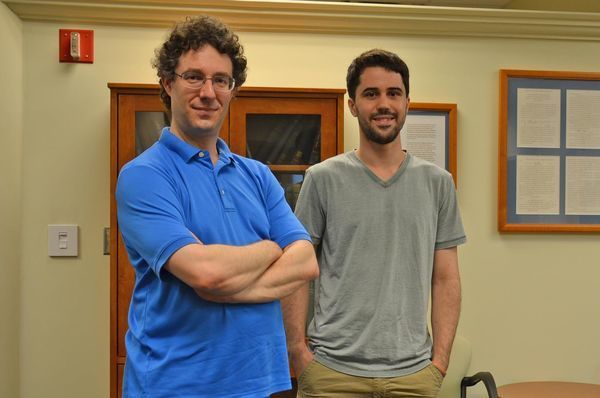
New algorithm could help find new physics
"Inverse method takes wave functions and solves for Hamiltonians Scientists at the University of Illinois at Urbana-Champaign have developed an algorithm that could provide meaningful answers to condensed matter physicists in their searches for novel and emergent properties in materials. The algorithm, invented by physics professor Bryan Clark and his graduate student Eli Chertkov, inverts the typical mathematical process condensed matter physicists use to search for interesting physics. Their new method starts with the answer—what kinds of physical properties would be interesting to find—and works backward to the question—what class of materials would host such properties. Inverse problem solving isn’t a new technique in classical physics, but this algorithm represents one of the first successful examples of an inverse problem solving method with quantum materials. And it could make searching for interesting physics a more streamlined and deliberate process for many scientists. More physicists are working in condensed matter than any other subfield of physics—the rich diversity of condensed matter systems and phenomena provide ample unsolved problems to explore, from superconductivity and superfluidity to magnetism and topology." [...]
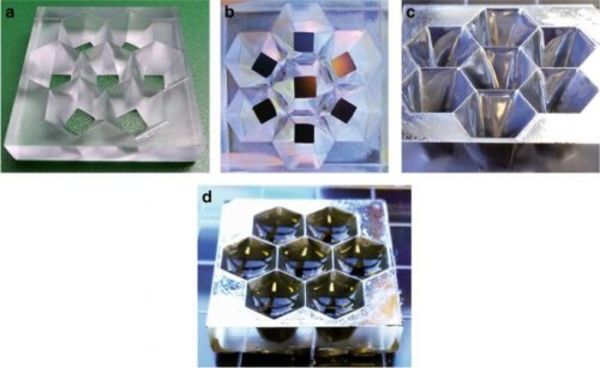
3D Printed Optics with Nano Meter Scale Surface Roughness
"Stanford researchers successfully manufactured high quality optical components using commercially available 3D printing materials. Researchers print optical surface (mirrors, arrays, lens molds), and coat it with a gel. Following curing, the optically smooth surface can be vacuum coated with Al and finished as a mirror or used directly as a mold. The method can be used to print mirrors, solar concentrators, lenses and optical elements of microscopes at a much lower cost. This gel smoothing technique can be used with commercial 3D printers (resolution of tens of microns) and the finished surfaces fabricated gave a rms (root mean square) surface roughness of around 2 nm. 3D printed optics were easy to fabricate, low cost, had design freedom and were also customizable, light weight, and low on material waste due to the additive nature of 3D printing." [...]

3D printing the next generation of batteries
"Associate Professor of Mechanical Engineering Rahul Panat has developed a revolutionary new method of fabricating battery electrodes using Aerosol Jet 3D printing. Additive manufacturing, otherwise known as 3D printing, can be used to manufacture porous electrodes for lithium-ion batteries—but because of the nature of the manufacturing process, the design of these 3D printed electrodes is limited to just a few possible architectures. Until now, the internal geometry that produced the best porous electrodes through additive manufacturing was what’s known as an interdigitated geometry—metal prongs interlocked like the fingers of two clasped hands, with the lithium shuttling between the two sides. Lithium-ion battery capacity can be vastly improved if, on the microscale, their electrodes have pores and channels. An interdigitated geometry, though it does allow lithium to transport through the battery efficiently during charging and discharging, is not optimal. Rahul Panat, an associate professor of mechanical engineering at Carnegie Mellon University, and a team of researchers from Carnegie Mellon in collaboration with Jonghyun Park, assistant professor of mechanical and aerospace engineering at Missouri University of Science and Technology have developed a revolutionary new method of 3D printing battery electrodes that creates a 3D microlattice structure with controlled porosity." [...]
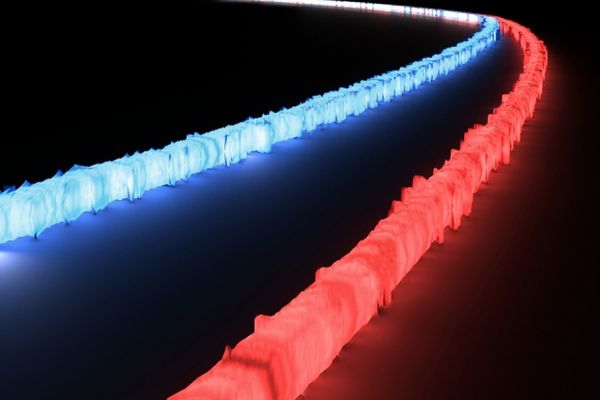
On-chip optical filter processes wide range of light wavelengths
"Silicon-based system offers smaller, cheaper alternative to other “broadband” filters; could improve a variety of photonic devices. MIT researchers have designed an optical filter on a chip that can process optical signals from across an extremely wide spectrum of light at once, something never before available to integrated optics systems that process data using light. The technology may offer greater precision and flexibility for designing optical communication and sensor systems, studying photons and other particles through ultrafast techniques, and in other applications. Optical filters are used to separate one light source into two separate outputs: one reflects unwanted wavelengths — or colors — and the other transmits desired wavelengths. Instruments that require infrared radiation, for instance, will use optical filters to remove any visible light and get cleaner infrared signals. Existing optical filters, however, have tradeoffs and disadvantages." [...]
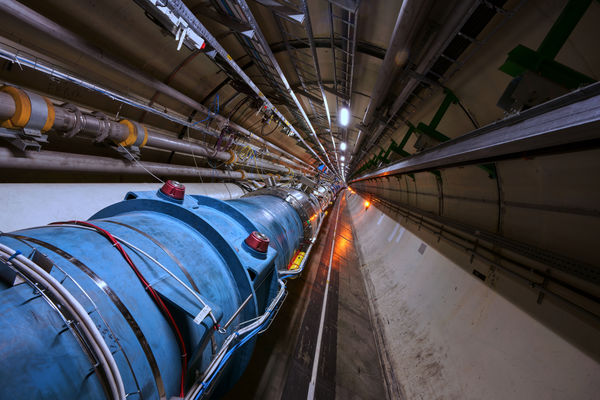
LHC accelerates its first "atoms"
"Protons might be the Large Hadron Collider’s bread and butter, but that doesn’t mean it can’t crave more exotic tastes from time to time. On Wednesday, 25 July, for the very first time, operators injected not just atomic nuclei but lead “atoms” containing a single electron into the LHC. This was one of the first proof-of-principle tests for a new idea called the Gamma Factory, part of CERN’s Physics Beyond Colliders project. “We’re investigating new ideas of how we could broaden the present CERN research programme and infrastructure,” says Michaela Schaumann, an LHC Engineer in Charge. “Finding out what’s possible is the first step.” During normal operation, the LHC produces a steady stream of proton–proton collisions, then smashes together atomic nuclei for about four weeks just before the annual winter shutdown. But for a handful of days a year, accelerator physicists get to try something completely new during periods of machine development." [...]
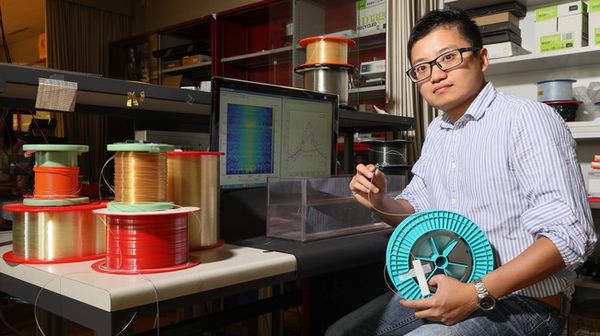
Optical fibers that can "feel" the materials around them
"In recent years optical fibers have served as sensors to detect changes in temperature, like a thermometer, and pressure, like an artificial nerve. This technique is particularly useful in structures such as bridges and gas pipelines. EPFL researchers have now come up with a new method that enables optical fibers to identify whether they are in contact with a liquid or a solid. This is achieved by simply generating a sound wave with the help from a light beam within the fiber. This study was conducted by the Group for Fibre Optics (GFO) run by Luc Thévenaz within the School of Engineering and has been published in Nature Communications. A sensor that doesn’t disturb the light No wider than a strand of hair, an optical fiber made of glass transmits light that varies according to four parameters: intensity, phase, polarization and wavelength." [...]

A Better Way to 3D Print Metallic Glass
"In the last several years, 3D printing with plastics has advanced rapidly. Now, a team of researchers have shown that it may soon be as easy and practical to use metals with 3D printing. Led by Jan Schroers, Yale professor of mechanical engineering & materials science, the research team used a new approach to 3D print objects from metallic glass – a relatively new material stronger than even the best metals, but with the pliability of plastic. The results are published in Materials Today. Because metals generally don’t exist in a state that allows them to be readily extruded, 3D printing of metals is still challenging and limited. Bulk metallic glasses (BMGs), however, can undergo continuous softening upon heating, a phenomenon present in thermoplastics but not conventional metals." [...]
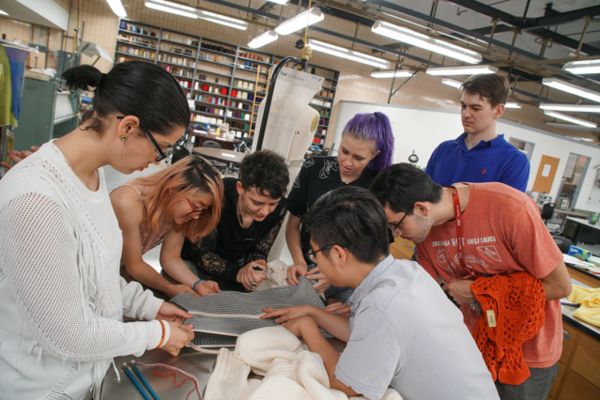
Inventing future fabrics
"Advanced Functional Fabrics of America workshop challenges pioneering MIT and FIT students to conceive new ideas. A T-shirt that can change color to complement your mood (and help you pare down your wardrobe). An apron that transforms into a dress and has interchangeable pockets with high-tech functionality. These are the forward-looking concepts presented by a group of three students from MIT and three students from the Fashion Institute of Technology (FIT), making practical use of the latest active textile technologies. For the first FIT/MIT Summer Workshop, held over two weeks in June, the six students spent one week at MIT in Cambridge, Massachusetts and one week at FIT in New York City to explore and develop clothing concepts using advanced functional materials that incorporate 3-D printing or advanced knitting technologies. The workshop was held collaboratively with Advanced Functional Fabrics of America (AFFOA), a Cambridge-based national nonprofit enabling a manufacturing-based transformation of traditional fibers, yarns, and textiles into highly sophisticated integrated and networked devices and systems." [...]

Reprogrammable Braille
"Researchers develop a framework to encode mechanical memory in a featureless structure – an elastic shell. When Harry Potter and the Order of the Phoenix was translated into Braille, it spanned 1,000 pages over 14 volumes of thick Braille paper. Tolstoy’s War and Peace weighs in at 21 volumes. But what if there was a way to store whole books in just a few pages of Braille? Researchers at the Harvard John A. Paulson School of Engineering and Applied Sciences (SEAS) have developed a framework to encode memory, in the form of Braille-like dimples and bumps, onto a blank, lattice-free material. “We show how an otherwise featureless curved elastic shell, when loaded appropriately, can store elastic bits (e-bits) that can be written and erased at will anywhere along the shell,” said L. Mahadevan, the Lola England de Valpine Professor of Applied Mathematics at SEAS, and Professor of Organismic and Evolutionary Biology, and of Physics, and an Associate of the Wyss Institute, and the Kavli Institute at Harvard University, and senior author of the study." [...]
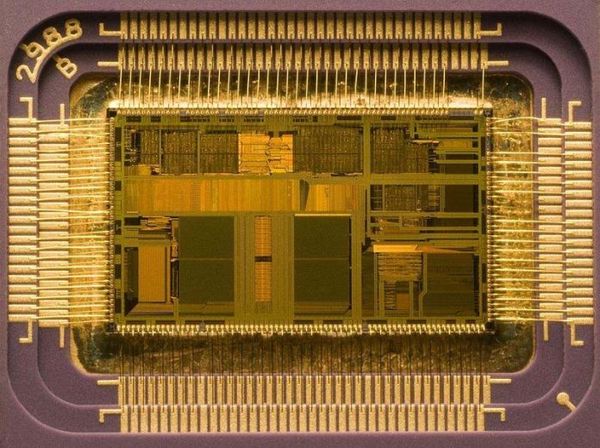
Microscale Superlubricity Could Pave Way for Future Improved Electromechanical Devices
"Discovery may lead to more robust computer hard discs, TAU and Tsinghua University researchers say Lubricity measures the reduction in mechanical friction and wear by a lubricant. These are the main causes of component failure and energy loss in mechanical and electromechanical systems. For example, one-third of the fuel-based energy in vehicles is expended in overcoming friction. So superlubricity — the state of ultra-low friction and wear — holds great promise for the reduction of frictional wear in mechanical and automatic devices. A new joint Tel Aviv University/Tsinghua University study finds that robust structural superlubricity can be achieved between dissimilar, microscale-layered materials under high external loads and ambient conditions. The researchers found that microscale interfaces between graphite and hexagonal boron nitride exhibit ultra-low friction and wear." [...]

UNSW Canberra research sheds new light on silicon nanoparticles
"New work on silicon nanoparticles – including a world-first – could be the next step forward for technologies such as optical circuits and security barcodes. New work by UNSW Canberra researchers on silicon nanoparticles could be the next step forward for technologies such as optical circuits and security barcodes. Associate Professor Andrey Miroshnichenko has co-authored two papers this month: ‘Boosting third-harmonic generation by a mirror enhanced anapole resonator’ for Light: Science and Applications and ‘Lighting up silicon nanoparticles with Mie’resonances’ for Nature Communications. UNSW Canberra research associate Dr Lei Xu was also a co-author on the Light: Science and Applications paper. Silicon is one of the most important semiconductors and has been used to fabricate electronic devices, waveguides, detectors and solar cells. However, its indirect bandgap and low quantum efficiency means it is not a good emitter." [...]
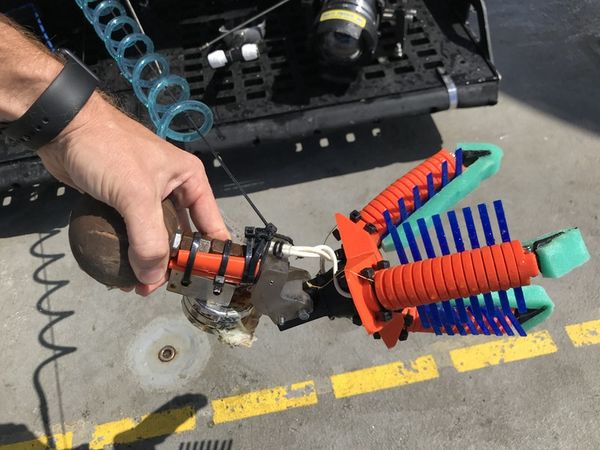
A soft, on-the-fly solution to a hard, underwater problem
"Soft grippers can be 3D printed on board ships to safely sample different types of sea life The deep ocean – dark, cold, under high pressure, and airless – is notoriously inhospitable to humans, yet it teems with organisms that manage to thrive in its harsh environment. Studying those creatures requires specialized equipment mounted on remotely operated vehicles (ROVs) that can withstand those conditions in order to collect samples. This equipment, designed primarily for the underwater oil and mining industries, is clunky, expensive, and difficult to maneuver with the kind of control needed for interacting with delicate sea life. Picking a delicate sea slug off the ocean floor with these tools is akin to trying to pluck a grape using pruning shears. Now, a multidisciplinary group of engineers, marine biologists, and roboticists has developed an alternative sampling device that is soft, flexible, and customizable, allowing scientists to gently grab different types of organisms from the sea without damaging them, and 3D-print modifications to the device overnight without the need to return to a land-based laboratory. The research is reported in PLOS One." [...]

'Strange metals' just got stranger
"A material already known for its unique behavior is found to carry current in a way never before observed Scientists at the Florida State University-headquartered National High Magnetic Field Laboratory have discovered a behavior in materials called cuprates that suggests they carry current in a way entirely different from conventional metals such as copper. The research, published today in the journal Science, adds new meaning to the materials’ moniker, “strange metals.” Cuprates are high-temperature superconductors (HTS), meaning they can carry current without any loss of energy at somewhat warmer temperatures than conventional, low-temperature superconductors (LTS). Although scientists understand the physics of LTS, they haven’t yet cracked the nut of HTS materials. Exactly how the electrons travel through these materials remains the biggest mystery in the field. For their research on one specific cuprate, lanthanum strontium copper oxide (LSCO), a team led by MagLab physicist Arkady Shekhter focused on its normal, metallic state — the state from which superconductivity eventually emerges when the temperature dips low enough. This normal state of cuprates is known as a “strange” or “bad” metal, in part because the electrons don’t conduct electricity particularly well." [...]
Modelos 3D
Com a disponibilidade de ferramentas que permitem dar azo a nossa imaginação na criação de peças 3D e espaços como o thingiverse para as publicar, esta rubrica apresenta alguns modelos selecionados que poderão ser úteis.

3d Printed Anemometer Under 5$
"I am building a small stand alone meteorological station. As always, I am trying not to buy each instrument but building them as far as I can because it is : much more fun and instructivemuch cheaper So I needed to find a way to measure the wind speed. An anemometer is basically a rotor with hemispherical cups mounted on it so it was a good pretext to get my 3D printer working. I also needed a way to measure the rotation speed of the rotor. I thought that a magnet and a hall sensor was a good solution. Each time the south pole pass in front of the hall sensor, a service interrupt routine is called and a counter is incremented in the microcontroller." [...]
Documentação
A documentação é parte essencial do processo de aprendizagem e a Internet além de artigos interessantes de explorar também tem alguma documentação em formato PDF interessante de ler. Todos os links aqui apresentados são para conteúdo disponibilizado livremente pelo editor do livro.

newelectronics 24 Julho 2018
"New Electronics is a fortnightly magazine focusing on technological innovation, news and the latest developments in the electronics sector. Downloadable as a digital page turner or pdf file, or offered as a hard copy, the New Electronics magazine is available in a format to suit you. " [...]
Projetos Maker
Diversos Projetos interessantes.
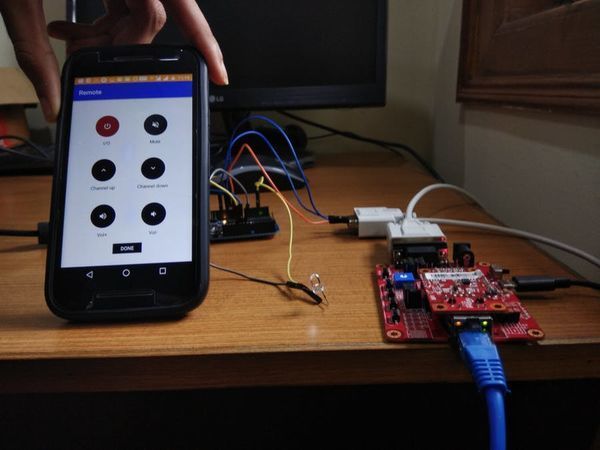
Infrared Remote
"You are armed with a lightweight and time-saving universal remote control system. Story If the projector does not respond to remote control commands, try the following solutions: Check that the remote control batteries are installed correctly and have power. If necessary, replace the batteries. Make sure you are operating the remote control within the reception angle and range of the projector. Check to see if a button on the remote control is stuck down, causing it to enter sleep mode. Release the button to wake the remote control up." [...]
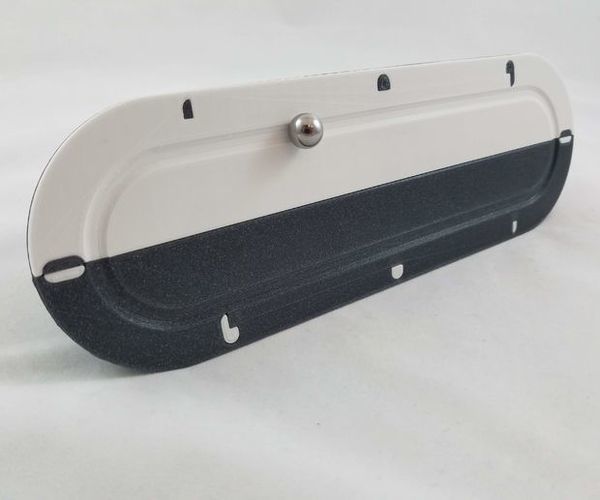
TLID Clock
"TLID stands for "time left in day". The idea for this project came from a frustration with my sleep schedule in college. I would work late into the night and wake up at 10, 11, and even 2 the next day. Classes would start, I'd eat, and then night falls. Waking up to half the day already spent feels awful, and I want to remember that feeling when waking up since it only hits me at night. And so, I made this numberless clock." [...]
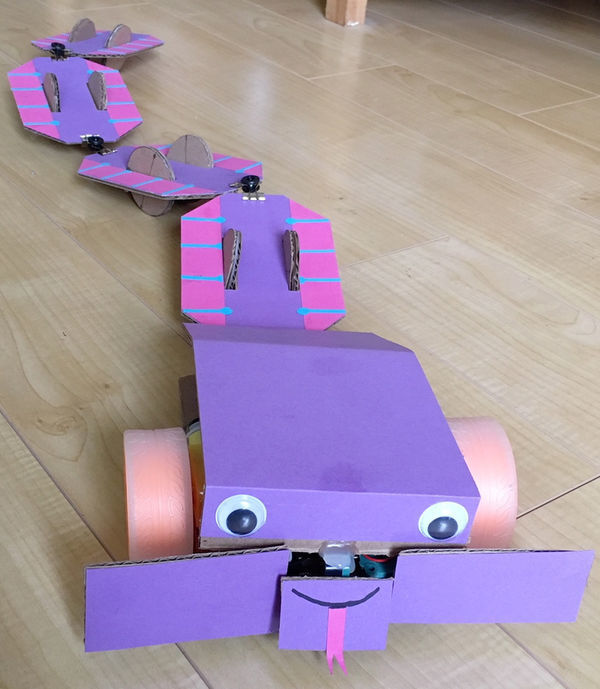
CRICKIT Snake Bot
"This project guides you through building a robot that can wander around your floor. This riffs on John Park's Crickit Carnival Bumper Bot. The difference is that the project progresses through several levels, starting with a very basic bot and adding capabilities. " [...]

Wifi Binary Clock
"Inspired by a binary clock that was difficult to read, and very inaccurate, I set out to create a simple to read binary clock that set itself over a wifi connection. Once the WiFi credentials have been entered into the Arduino code as well as the desired timezone offset, and the code is uploaded to the ESP32 board the ESP32 gets the time and then converts it into a usable format,then the clock will adjust for daylight savings, tell you if it is AM or PM and on Monday mornings the clock will reset the time, over its wifi connection, so that the clock stays accurate and will not be ahead or behind. unfortunately, this is my first Instructables as well as being my first time using an ESP32 development board, so there was a lot of trial and error with little to no recording of the process. " [...]
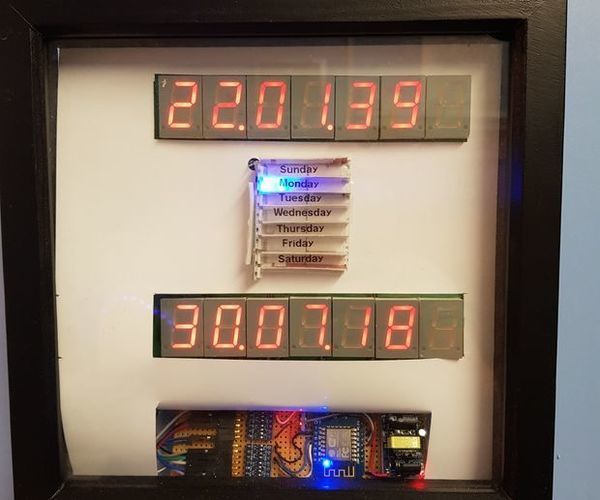
Yet Another Clock
"As can be seen from my previous uploads I obtained some 7 Segment Display boards from some old weighing equipment. My previous effort used an Arduino with a Real Time Clock module. This Instructable uses a ESP8266 D1 Mini connected to an NTP server ! The code is based on an example from the ESP8266WiFi library. I am not going to go into detail regarding the 7 Segment display wiring as there are dozens of examples on the net. The 2 boards I have, use the MAX7219 decoder driver chip, these only require 3 pins to control up to 8 x 7 Segment Displays." [...]

Simple DIY Party PhotoBooth!
"Welcome back!Me and my future wife is close to our wedding now and we decided to save some money and make out own PhotoBooth instead of renting one. We had more or less all the equipment for the system, all we needed was an enclosure and some software. We used this Software: https://dslrbooth.com/ It was super easy to use and you can use all from a usb webcam to a big dslr camera. It automatically saves the pictures on the computer both in the PhotoBooth layout and the raw original in high quality! We were asked by some people on a Facebook wedding page (Bryllup - Jeg skal giftes - Bryllup.dk) to make this so we hope you will excuse us for doing it in english. ;-) In this instructable there is not mentioned any measurement because it will most likely be different from person to person how big or small they want it." [...]
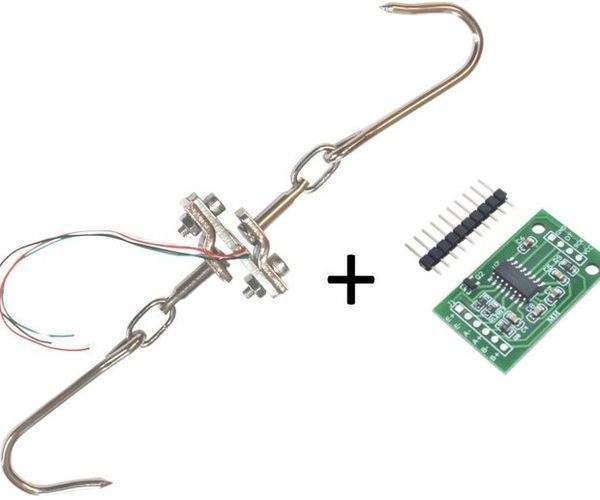
Arduino Tension Scale With 40 Kg Luggage Load Cell and HX711 Amplifier
"This Instructable describes how to make a tension scale using readily available off the shelf parts. Materials needed: 1. Arduino - this design uses a standard Arduino Uno, other Arduino versions or clones should work also 2. HX711 on breakout board - This microchip is specially made for amplifying the signals from load cells and reporting them to another mircocontroller. The load cells plug into this board, and this board tells the Arduino what the load cells measure. 3." [...]
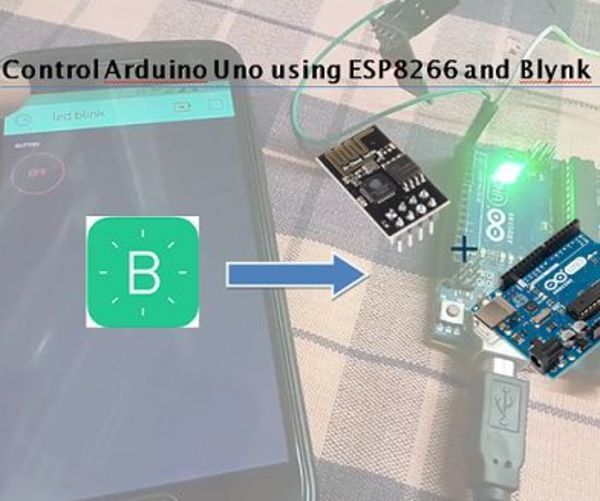
Control Arduino Uno Using ESP8266 WiFi Module and Blynk App
"This project enables you to control the Arduino pins using ESP8266-01 WiFi module and Blynk App. Blynk App is very easy to use and is great way to begin learning about IoT. " [...]
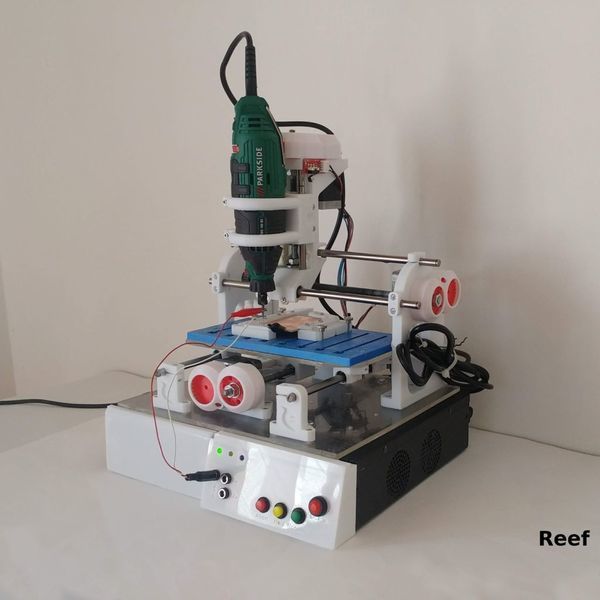
CNC Cyclone PCB Factory, My Way, Step by Step.
"I'd like to renew my cnc for PCB so I decide to create new one from an existing project named Cyclone PCB Factory. You can find the original project here. (I know I need to buy a good webcam)" [...]
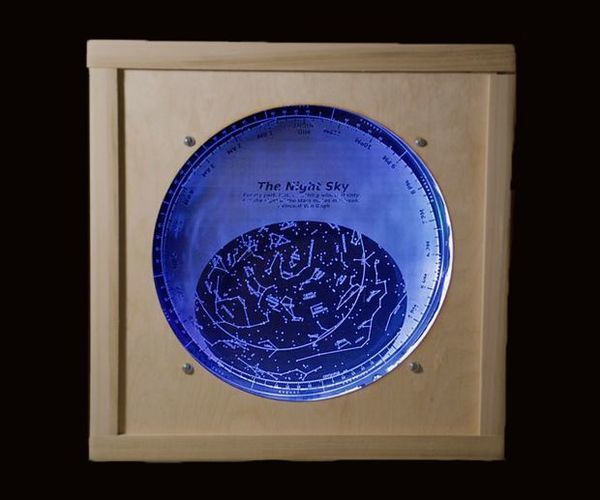
The Astronomy Clock
"Shortly after the first mechanical clocks were invented in the 14th century, inventors started looking for ways to represent the motion of the heavens. Thus, the astronomy clock was created. Perhaps the best known astronomy clock was created in Prague in about 1410. Instead of just showing what time it is, it also shows the relative position of the stars as the Earth rotates on its axis and revolves around the Sun. In this project, you will learn how to create an astronomy clock that you can have in your home. It displays a map of the stars that are currently in the sky - day or night." [...]

Model Railroad DCC Command Station V2
"This is version 2 of my original DCC Command Station Instructable. I have learned a number of things from the original experience about the Arduino Nano, the h-bridge LMD18200t and the TFT LCD display. 1. The analog pins on the Nano may be used for serial communications e.g. A3/A4 for Rx/Tx. The original used D0 and D1 making serial monitoring impossible." [...]
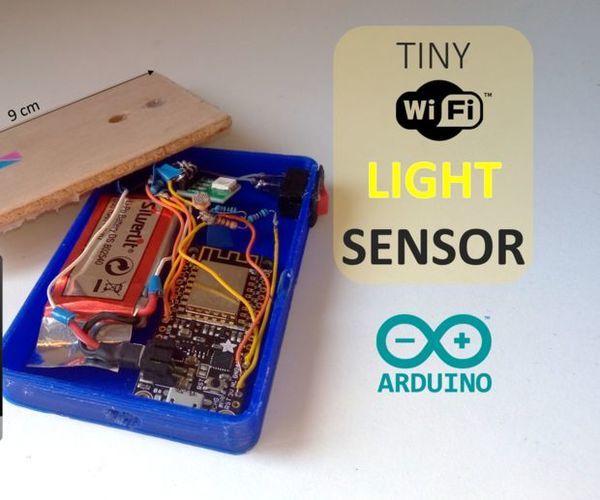
DIY - Wifi Light Sensor - Wifi Communication to ThingSpeak
"The purpose of this project is to create a IoT (Internet of Things) device with arduino which send data to ThingSpeak by WiFi, and create real-time graphics. ThingSpeak store and retrieve data from things using the HTTPprotocol over the Internet. We are going to create a tiny device (60x90 mm - 2.36x3.54 inches) with the Feather Huzzah card from Adafruit and send data to ThingSpeak using the ESP8266 WiFi device. We are going to send the data from our light sensor made with a photoresistor. Eventually, the whole device will hold in a tiny box (3D printed + wood) which will make our IoT project fully wearable. " [...]

Ish Clock
"I often find my self buying things that I have no idea what I'm going to do with. This project is a result of a purchase of a ring that has 12x WS2812b LEDs on. I had no plans for it but it looked cool online so I stuck one in my cart, played with it for a while when it arrived and then forgot all about it. A while later I was thinking about making a clock and remembered it was sat there not doing anything. I was thinking about buying a second ring with 60 LEDs on to make up the minutes but then started thinking how we / I tend to look at the time and round it to the nearest 5 minutes. With this in mine I set out with my 12 LED ring to make the ish clock." [...]
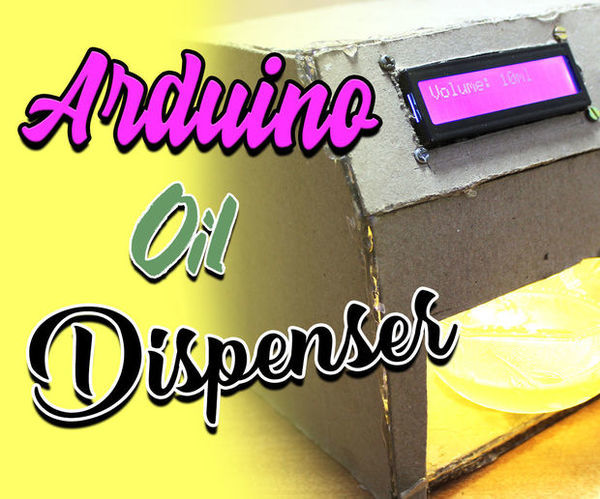
Arduino Based Oil Dispenser
"we all love food isn't that right? of course yes, everyone has tried cooking once in their life, and already knows the struggle to get exact amount of oil for the perfect recipe, so here is a project which will help you get it correct, follow the instructions till the end and you will have a beautiful Arduino Based OIL DISPENSER" [...]

3D Printed Flashing LED Dial Clock
"Welcome to Yantrah's instructable! We at Yantrah focus on hands-on education, we teach 3D CAD designing, programming, STEAM and robotics. This is a simple arduino based 3d printed clock with flashing LEDs to show the hour, minutes and seconds passed . We designed and coded the whole clock in TINKERCAD. TINKERCAD is very easy web-based CAD software which allows you to design 3D models and also has a circuit feature that allows you to code and simulate circuits. Follow the instructions below to make one yourself!" [...]

OLED I2C Display Arduino/NodeMCU Tutorial
"The very first program you write when you start learning a new programming language is: "Hello World!". The program itself does nothing more than printing a Hello World text on the screen. So, how do we get our Arduino to display the "Hello World!"? In this video, I will be showing you how to get started with the small 0.91 (128x32) and 0.96 (128x64) I2C OLED displays. There are 100s of tutorials on the web explaining the same thing in different ways, but I couldn't find one that tells me all about the OLED display and how to use it in different scenarios. It took me some time to work it all out." [...]
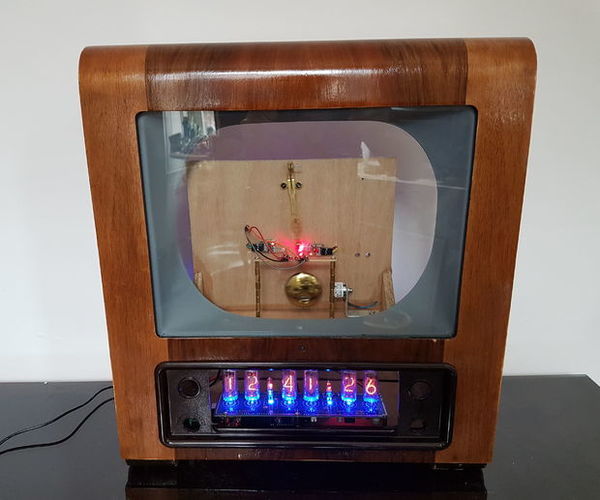
Electromagnetic Pendulum Laser Nixie Clock, With Thermometer
"I have built a couple of Nixie Tube clocks previously, using an Arduino Nixie Shield I bought on ebay here: https://www.ebay.co.uk/itm/Nixie-Tubes-Clock-IN-14... These boards come with a RTC (Real Time Clock) built in and make it very straightforward to get a simple nixie clock up and running. It's just a matter of attaching the shield to your arduino (either uno or mega) and uploading the code supplied with the board (here on github for the latest version: https://github.com/afch/NixeTubesShieldNCS314/ ) and you're good to go. But, I had an idea! Could I set up a system where I could use a pendulum to mark the time and somehow measure this and display it on the nixie tubes? Well, it turns out I could, and so can you." [...]
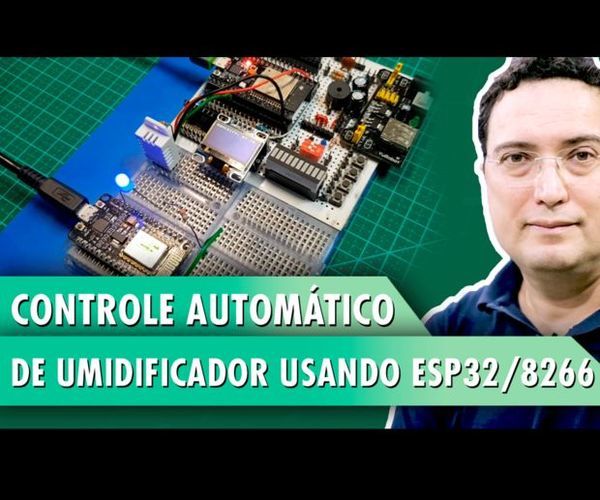
Automatic Humidifier Control Using ESP328266
"Today, I decided to show a project that I actually made for use in my own home. I have an air humidifier, which often leaves the room too dry. And sometimes, it leaves water on the floor around it. So I thought to myself: I use both DHTs, so why not make an automatic moisture control? Well, that's exactly what I did, and I'll discuss this further in the video, How to make an ESP32 read the humidity and show it on an OLED display. Also, based on humidity, the ESP32 will (via the ESP-NOW protocol) send the signal to an ESP8266 thats on or off the relay." [...]

ServoThermometer
"This is an analog temperature display built from a digital sensor ds18b20, a mini servo, and electronics based on an esp-12f module It has the following features. Self contained unit holding electronics, servo and battery Good accuracy and precision using ds18b20 digital sensor Rechargeable LIPO with inbuilt charger Very low quiescent current (< 20uA) for long battery life Servo only turned on for short periods again giving good battery life. Normally the module sleeps between temperature updates but can be turned into a non sleep mode for checking and configuration Configuration data upload and servo test from web interface Minimum, maximum temperatures, Centigrade.Fahrenheit, and update interval configurable Battery monitoringSoftware can be updated via web interface" [...]
132 Pixel Clock
"I have, for as long as I can remember been obsessed by LEDs and time. In this project I have created a large wall clock that displays the current time using 132 neopixel LEDs mounted and shining through a spruce board. Its a hybrid analog digital with an Individual pixel for each hour, minute and second. This was the largest project I have taken on to date, I started thinking about it 6 months ago and the idea slowly came together. I am really happy with the outcome and I'm looking forward to sharing it with you. " [...]

Universal Battery Charge Indicator 3.7v-24v
"As we all deal with various potential battery e.g 3.7v li-po li-ion battery, 6v 9v, 12v, 24v lead acid battery. It can be charged using its respected chargers but if we want to monitor charge status then we have to buy different indicator module for Different batteries ,we need to do something for that, Guys we can make your own that can measure charge level of all battery types. " [...]
"Charlotte's Web" Style LED Filament Clock
"Ever since I first saw the LED filament light-bulbs I have been thinking that the filaments must be good for something, but it took until the closing-down sale of a local electronics part shop for me to buy some bulbs with the intention to smash them and see what I could do with the filaments. It didn't take long to decide that they would make an interesting clock, and that it would be a lot of fun to float the segments in the air suspended only by their power wires. Part way through building it I realised that it was oddly reminiscent of the cobwebs with writing in from the book "Charlotte's Web" Bear in mind that this device has 80V on the bare metal frame. But using an isolating DC-to-DC converter and power supply means that it is possible to touch the frame and not get a shock. Or at least I haven't. " [...]

Skate-o-Meter
"I'm a student at Howest Kortrijk. To show our skills to the lectors we needed to build a project, I did chose to create a odometer and speedometer for my skateboard with an RFID scanner. In this instructable I'm goig to say how I did made this project. I came up with this idea because I like to skate and cruise around. While I'm cruising it would be handy to see how much distance I've travelled and see my speed. Keep in mind this is a prototype." [...]
Talking Musical NeoPixel Clock with Infrared, BLE and Touch Controls
"When Adafruit first introduced the 60 element Neo-Pixel ring in March 2004, the obvious choice for a project was to build a clock. By selectively lighting certain pixels around the ring you can depict analog time in a digital manner. Because the SAMD21 processor used in a Feather M0 boards has a built-in real-time clock, it's easy to keep track of time once you start the clock. The "RTC_Zero" library provided by Arduino.cc makes it easy to set and read the time using this built-in real-time clock hardware. We give you a variety of ways to set the time and control various options on the clock. The simplest method is a set of 4 touch control pads using the Adafruit_FreeTouch library." [...]

Chiiiiiirp! Indoor Air Quality Measurement and Alarm
"Monitor and advise about indoor air quality (IAQ) with the help of a MAX32620FTHR, BME680, LoRaWAN, Cayenne, and IFTTT. Story In our house, we do these days have a smoke alarm and CO2 detector. These are warning us for the most dangerous things we must be safe of. Even if it’s the old dump “BEEP BEEP BEEP” alarms, or a smarter device like a Nest Protect, they only alert you if there is an emergency. Why don’t we monitor and advise about Indoor Air Quality (IAQ) on the same scale? Primitive Detection of Air Quality with a Canary As an alert for Methane gas, miners did take a canary into the mine." [...]
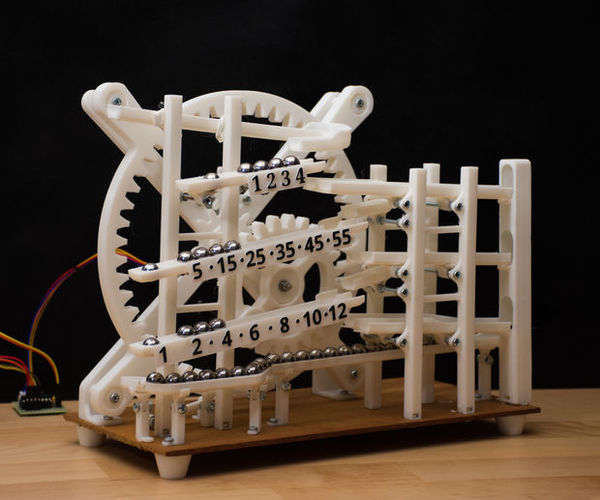
Marble Clock
"Marble Clock is a 3D printed rolling ball clock that tells the time by the location of marbles/balls. It consists of 3 main rails, where, The 5-minute rail with 1-minute intervals The 15-minute rail with 15-minute intervals The 12-hour rail with 1-hour intervalsadd up and tell the time. Outline In the first step, I will give you a little bit of history of rolling ball clocks and ball clocks in general. Next, I will explain the Idea behind this project. Then I will give you an insight into the design process of this clock, so you'll be able to design your own clock. I'll give you a 3d print guide so you can easily print the required pieces and arrange them." [...]
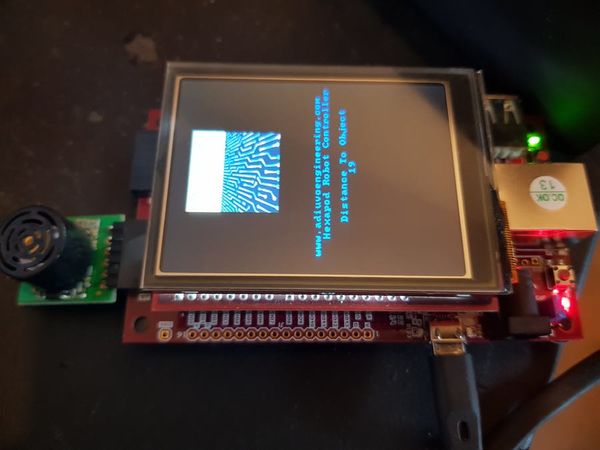
Building a Hexapod Robot: SONAR Measurement with FPGA
"Part one of a project that will demonstrate the building of an FPGA/SoC-based hexapod robot. Story Introduction One of the projects I am working on at the moment is an FPGA / SoC-controlled hexapod robot which is capable of walking and navigating around obstacles in its environment. To navigate the robot will need to be able to detect the distance to objects. There are two ways this can be achieved: using stereoscopic cameras or an active sensor such as a ultrasonic range finder. Ultrasonic range finders work by generating a high frequency signal, and then measuring the time of flight of the reflected signal to determine the distance to an object. My plan for the hexpod robot is to use a Cora Z7 board to implement the motor control, navigation system, and user interface." [...]
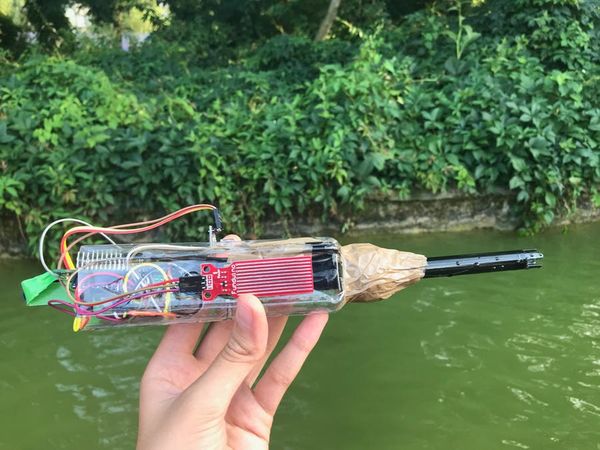
MyRiver
"Bring river monitoring to a new level! Monitor the pH, water level, and pollution by insoluble substances of a river from anywhere. Story Overview A river or lake can be a great source of fun and relaxation. But if the river becomes dirty and contaminated, all the fun is gone. Many people depend on river water to feed their livestock and cannot afford to give their animals dirty water. Imagine living right next to a river (if you are not), you would not want to wake up in the middle of the night with your house flooded because of the river." [...]
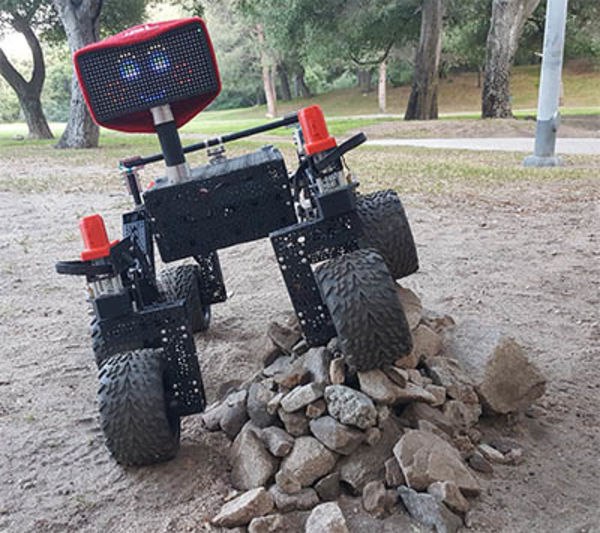
Build Your Own Rover
"Have you ever wondered what it takes to build a rover like NASA’s Curiosity rover, part of the Mars Science Laboratory project? One would rightfully assume it takes expertise in mechanical engineering, software development, and electronics to even begin to construct such a complex robot. Now students, hobbyists, and enthusiasts can learn about these skills and get a taste of what it is like to construct such a rover using plans and instructions from JPL’s Open Source Rover Project. After the successful landing of Curiosity on Mars, the Jet Propulsion Laboratory in Pasadena, California built a smaller educational model of the rover (called “ROV-E”) which was used as an education tool for high school and university students, as well as the general public. It was a rover that could be brought into classrooms, museums, and school events to demonstrate robotic principles first-hand. The response to this rover was very positive and often included the question “How can we build one of our own?”." [...]
That's all Folks!


